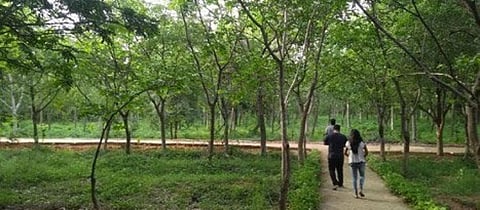How an urban planner undertook green recovery in Telangana’s 72 ULBs
This is second in a three-part series of stories from impact workshop conducted by Centre for Science and Environment under the programme of School of Water and Waste
The green cover in some districts of Telangana at the time of initiation of Telangana Urban Green Environment Project (TUGEP) was less than 10 per cent when Anubhav Jangra, an architect and urban planner, decided to go on board with designing parks across 72 urban local bodies (ULB).
Jangra was a part of Delhi-based think tank Centre for Science and Environment’s training ‘Tools and Approaches for Citywide Water Sanitation, 2019’, following which he worked as a planning consultant on project ‘Preparation of DPR on Urban Green Environment Project in 72 ULBs of Telangana State’ as part of Rs 338-crore Telangana Municipal Development Project (TMDP).
As part of the project, extensive mapping and designing of parks with detailed cost estimates and implementation frameworks were prepared. Unencumbered land was identified in 72 ULBs including wastelands, public land and water bodies. The project design included establishment of parks, tree-buffer zones and greening of roadsides, medians, intersections and rotaries.
About six million trees; 281 kilometres of roadside plantation; 687 parks spread across 305 acres; development of 91 junctions took place in 72 cities to increase the urban green cover in the state 33 per cent from 24 per cent.
The project is a response to climate change and issues of pollution and is expected to provide access to social and recreational spaces to citizens, increase municipal aesthetics and biodiversity including endemic flora and fauna.
The first step under TUGEP was, hence, to develop a detailed project report for the same. As part of the project, Jangra was able to inform the design guidelines for various public parks and open spaces to include rainwater harvesting techniques to address the issue of urban flooding.
After attending CSE’s training, Anubhav reworked on the scope of the project and included rainwater harvesting structures to save millions of litres of water going down the drain, potentially flooding the neighbourhood.
The ULBs were sensitised via an additional chapter for way forward on water-sensitive urban design and planning techniques with measures such as bio-swales and retention basins.
TMDP officials led to a state-level parallel project on lake revitalisation in urban areas headed by urban forestry consultant. He was also able to use the geographical information systems training in his work as part of mapping and analysis.



